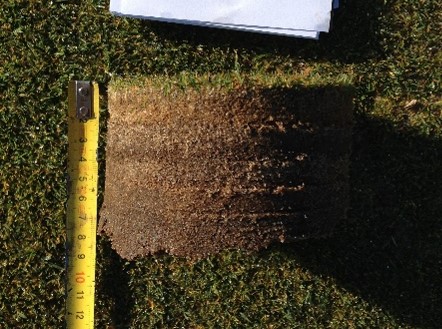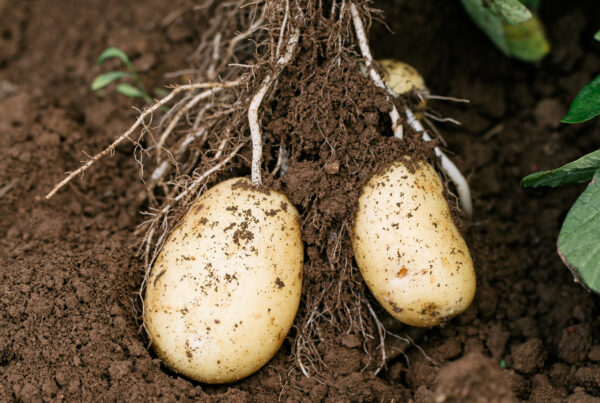Specifically designed for bulk-blended fertilizer manufacturers, Cormin® SW has been certified under PFC 6 as a non-microbial plant biostimulant, in compliance with EU Regulation 2019/1009. This certification not only confirms its proven agronomic effectiveness—based on official field trials—but also ensures strict quality control during production, compliance of raw materials with regulations, and clear, accurate labeling for end users.
“This is great news for fertilizer blenders,” says Charles Marchand, EVP Olmix Plant Care Division. “This label is a mark of reliability that gives them confidence in choosing an effective solution and clearly communicating the benefits of Cormin® SW to farmers.”
Fertilizer efficiency: a key challenge for agriculture
Mineral fertilizers have played a central role in boosting agricultural productivity for nearly a century. They’ve helped feed a growing global population—but their use also brings challenges. As mentioned in a report by the International Fertilizer Industry Association*, on average, less than 60% of applied fertilizers are taken up by crops in the first year. The rest may contribute to environmental issues: greenhouse gas emissions during production and application, soil structure degradation, disruption of microbial ecosystems, heavy metal accumulation (like cadmium), and nutrient losses through leaching or erosion.
Another major challenge: the global fertilizer supply chain. Only a handful of countries control the natural resources needed to make mineral fertilizers—natural gas for nitrogen, and mined minerals for phosphate and potash. As a result, many countries are highly dependent on imports, making their food sovereignty vulnerable to geopolitical shifts. In today’s uncertain world, using fertilizers more efficiently is a strategic priority.
Jérôme Alix, Head of Crops at Olmix, sees Cormin® SW as part of the solution: “If we want to produce enough food while protecting the environment, we need to get the most out of every kilogram of fertilizer, and also help crops tap into nutrients already present in the soil. That’s the pathway to an even more sustainable fertilizer use, and the reason we developed Cormin® SW.”
Cormin® SW activates soil life to boost nutrient uptake
The action of the biostimulant Cormin® SW is based on a proprietary formulation developed by Olmix teams: MIP® RHIZO technology, combining minerals and enzyme cofactor trace elements, dry extract of marine algae B-SEADRY®, and plant-based organic extracts rich in prebiotics and proteins.
When applied to the soil alongside fertilizers, Cormin® SW’s ingredients activate microbial processes that drive the transformation and uptake of nutrients by the plant.
With over 100 field demonstrations, Cormin® SW has proven effective in arable crops, with measured improvements in:
- N, P, K, Ca, and Mg use efficiency
- Photosynthesis, leaf biomass, and plant vigor
- Grain filling in cereals
Better yields for farmers – Easy integration for industry
Improved plant nutrition leads to better yield potential.
In cereal crops, trials show average yield increases of 6.8% at equal fertilizer levels (up to 16.3%), and 4.8% in potatoes (up to 17.7%).
Jérôme Alix highlights the many situations where Cormin® SW is especially recommended: “On one hand, it helps when agronomic conditions limit nutrient availability in the soil and therefore reduce yields, like phosphorus lock-up, shallow rooting, or slow organic matter breakdown. On the other hand, it’s valuable in regulated areas where fertilizer use is restricted. In all these cases, Cormin® SW is a real asset for farmers to boost yields, while also making it possible to optimize fertilizer application rates.”
Cormin® SW is available in granular form and is added directly into fertilizer blends at the mixing station. It’s fully compatible with standard bulk-blending equipment and all fertilizer raw materials. The recommended application rate is 75 kg/ha, and it can be used on all field crops.
Charles Marchand outlines Olmix’s next steps: “We’re focused on expanding Cormin® SW across Europe, and this new PFC 6 certification gives us a strong foundation. At the same time, we’re seeing growing interest from Asia and Latin America, which confirms our strategy to develop technical biostimulant nucleus for ag input manufacturers worldwide.”
*Source : 2010 Report « Slow -and Controlled- Release and Stabilized Fertilizers – An Option for Enhancing Nutrient Use Efficiency in Agriculture »



